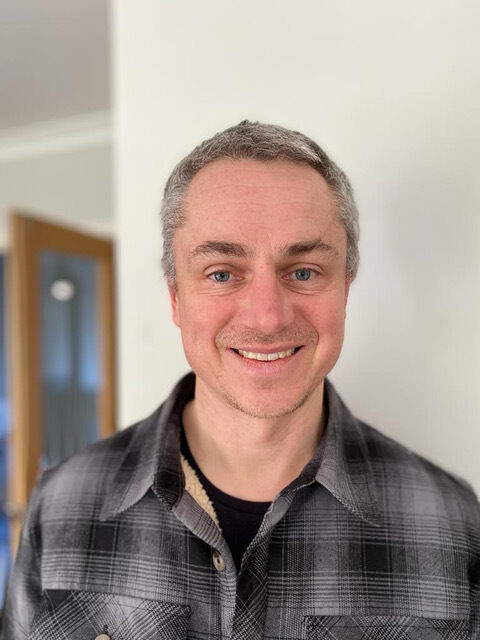Tom Baker: Pachyonychia Congenita
Tom is a 44-year-old patent attorney. He lives in in Swansea with his wife and two young sons. He has Pachyonychia Congenita - an ultra-rare genetic skin disorder caused by a mutation in one of five keratin genes. One of his sons also has the same condition.

About Pachyonychia Congenita
Pachyonychia Congenita is an ultra-rare skin condition that can be spontaneous or inherited in an autosomal dominant manner. Symptoms vary dependent upon the precise gene mutation.
Common symptoms include
painful calluses on the feet – in some cases rendering walking unbearable – and, to a lesser extent, the hands
Other symptoms can include
thickened nails, white patches on the tongue and inside the mouth, bumps around the elbows, knees and waistline, and various cysts
Management of the condition
depends on symptoms, but usually involves regular trimming of the calluses and pain relief medicines
Tom’s story: Living with Pachyonychia Congenita

Tom describes himself as “lucky” because he says he has a mutation in a gene which means he can at least walk to some extent compared to others with similar gene mutations who may need walking aids. He finds it frustrating and stressful because it restricts what he can do. Most days he plans his activities to manage his symptoms, but every day he is in pain – and it worsens as the day goes on.
In Tom’s situation the condition has affected his feet – which both have thick calluses – and his family first became aware of the problem when he was very young, particularly when he started to walk. Throughout his childhood he tried to get on with things and played football until the age of 12 when it became too difficult to manage the pain. He also became more self-conscious of his condition and didn’t want anyone to see his “yellow feet”.
The calluses on the bottom of Tom’s feet are constantly developing – they thicken and worsen whenever any pressure, such as walking, is put on them. With each step he takes, it feels like he is walking across pebbles or that he is on a rough surface such as the bobbled ground used for blind people at zebra crossings.
Living with the condition
Throughout his life he’s had to cut the calluses off with a scalpel every two to three weeks – but now, as he gets older, he's having to do it more frequently. He can’t allow the calluses to get too thick as it makes them much harder to cut off and more likely to crack and split, making him prone to infections. On the other hand Tom can’t cut too much callus off as this exposes the raw flesh of the foot underneath.
To minimise his pain, Tom doesn’t wear closed-in shoes and tends to use flip-flops instead. When they get overheated or too wet, the pain in his feet becomes much worse. He loves to swim but knows that by doing so he’ll have used up his “walking credits” for the day.
Weekends are generally harder for Tom with the active demands of a young family and because he isn’t sitting at his work desk as much. He likes to push himself to do things but knows that it does make a “mess” of his feet.
He says: “I have an idea of what I can do, and I have always pushed it as far as I could but if I do overdo it, my feet will burn which will keep me awake at night.”
Getting a diagnosis
When Tom was a child, there wasn’t a name for his condition. The many specialists he saw would tell him he had palmoplantar keratoderma – a medical term for “thickened skin”. He felt than no one really understood what it was like for him and how much pain it caused.
Tom says: “I had regular visits to chiropodists who would assume that the hard skin could simply be removed to leave ‘good’ skin underneath without understanding that there is no ‘good’ skin!”
Around 12 years ago, when doing an internet search on “thickened skin”, he came across an academic paper about a condition that looked like his. He emailed the researcher, who in turn directed him to a US charity and they sent him a genetic testing kit. He was then diagnosed with Pachyonychia Congenita.
What getting the diagnosis means
Tom says: “It was a big jump getting the diagnosis. It’s great knowing what it is – I feel much more positive and even though there is currently no treatment, at last I know what the problem is and that it’s not just me.”
He’s encouraged there is research taking place and feels very reassured that the depth of knowledge about Pachyonychia Congenita is expanding all the time, there are more people being diagnosed (but still less than 1,000 people worldwide!) and is willing to take part in any scientific studies.
He’s also much happier these days with the knowledge gained following a diagnosis to talk to others about his condition and belongs to various support groups. In addition, Tom now feels much better equipped to help and support his son who has the same condition.